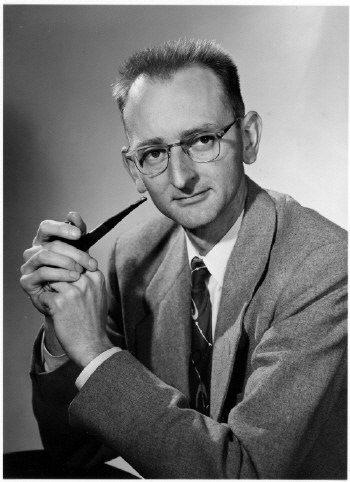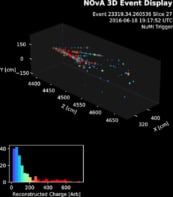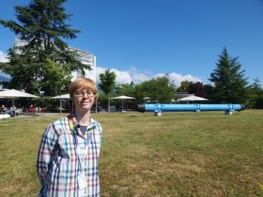Owen Chamberlain, who co-discovered the antiproton with Emilio Segrè in 1955, has died at the age of 85. Chamberlain and Segrè shared the 1959 Nobel Prize for Physics for the discovery of the particle, which has the same mass as the proton, but opposite charge. Postulated by Paul Dirac in 1933, the antiproton is now routinely used in particle-physics experiments.

Born in San Francisco on 10 July 1920, Chamberlain obtained a bachelor’s degree from Dartmouth College in New Hampshire in 1941, before entering graduate school at the University of California, Berkeley. However, his studies were interrupted by America’s entry into the Second World War and in early 1942 Chamberlain joined the Manhattan atomic-bomb project, first at Berkeley and then at Los Alamos. There he worked under the supervision of Segrè, investigating the properties of neutrons and the spontaneous fission of heavy elements. Chamberlain was present at the first atomic-bomb test in New Mexico, losing a $5 bet that it would not go off.
After the war, Chamberlain resumed his graduate work at the University of Chicago under the supervision of Enrico Fermi. He completed his PhD on the diffraction of “slow” neutrons in liquids in 1948 and the same year took up a teaching position back at Berkeley. Chamberlain also began a series of experiments with Segrè and Clyde Wiegand on the “Bevatron” accelerator at Berkeley’s Radiation Laboratory, including several that involved smashing ordinary protons into copper. Chamberlain found that a few of the particles that streamed out from the collisions had the same mass as protons but curved the opposite way in a magnetic field: proof of the existence of the antiproton. Chamberlain announced the existence of the new particle in October 1955.
The existence of the antiproton was soon confirmed by his colleague Gerson Goldhaber, who saw tracks of antiprotons meeting protons in photographic emulsions and then annihilating in a burst of energy. Ironically, Goldhaber’s brother, the particle theorist Maurice Goldhaber, had laid down a $500 bet that the antiproton did not exist.
In 1958 Chamberlain was appointed a full professor at Berkeley and he soon adopted the laid-back mannerisms of the university, growing a large beard and long hair. He also spoke out on various issues such as human rights, free speech, and peace, and became involved in attempts to initiate a nuclear test-ban treaty. He remained at Berkeley until retiring in 1989, although he continued to attend weekly colloquia — including one the day before he died.
Writing in Physics World last year, his one-time PhD student Herbert Steiner said that although graduate students at Berkeley learned a lot from Segrè, they usually prefered to go to Chamberlain when they wanted to understand a tricky concept in physics. “Chamblerlain was very approachable and [was someone who] could invariably find his own unique explanation to [a] problem,” wrote Steiner.



